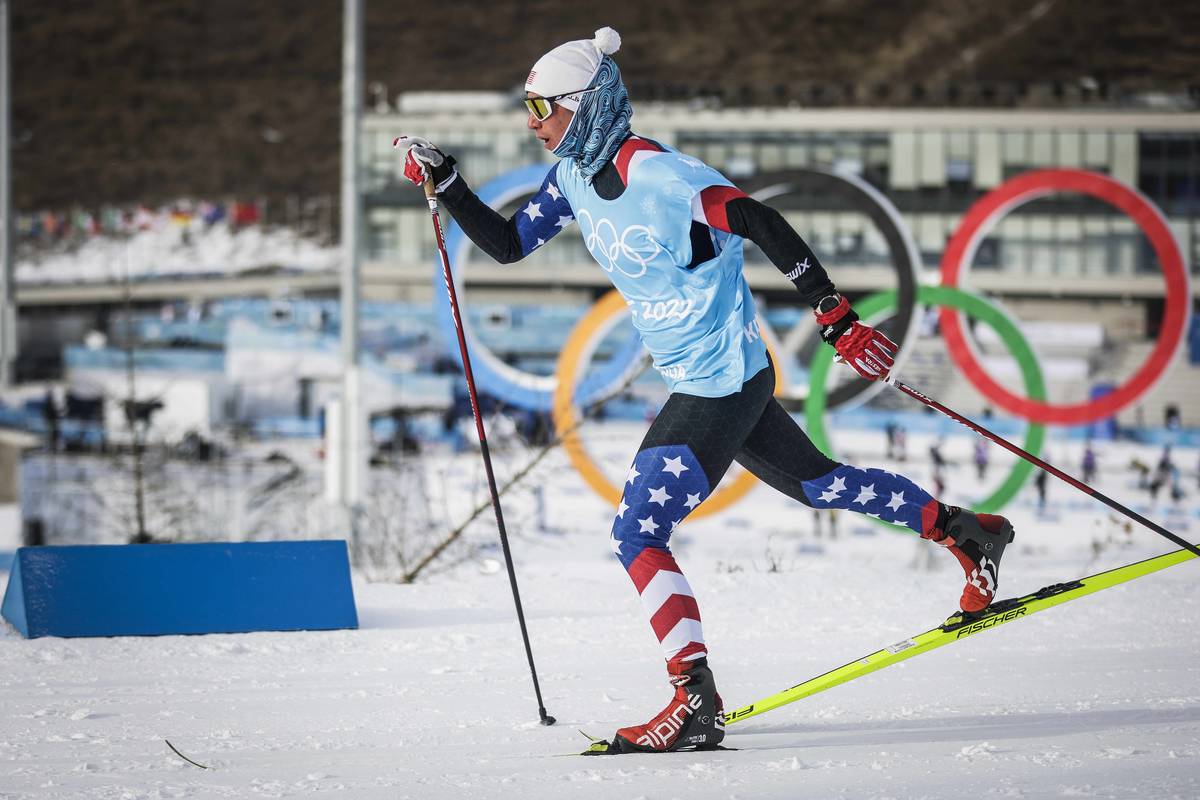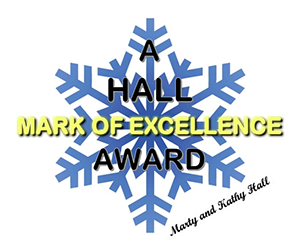 This coverage is made possible through the generous support of Marty and Kathy Hall and A Hall Mark of Excellence Award. To learn more about A Hall Mark of Excellence Award, or to learn how you can support FasterSkier’s coverage, please contact info@fasterskier.com.
This coverage is made possible through the generous support of Marty and Kathy Hall and A Hall Mark of Excellence Award. To learn more about A Hall Mark of Excellence Award, or to learn how you can support FasterSkier’s coverage, please contact info@fasterskier.com.
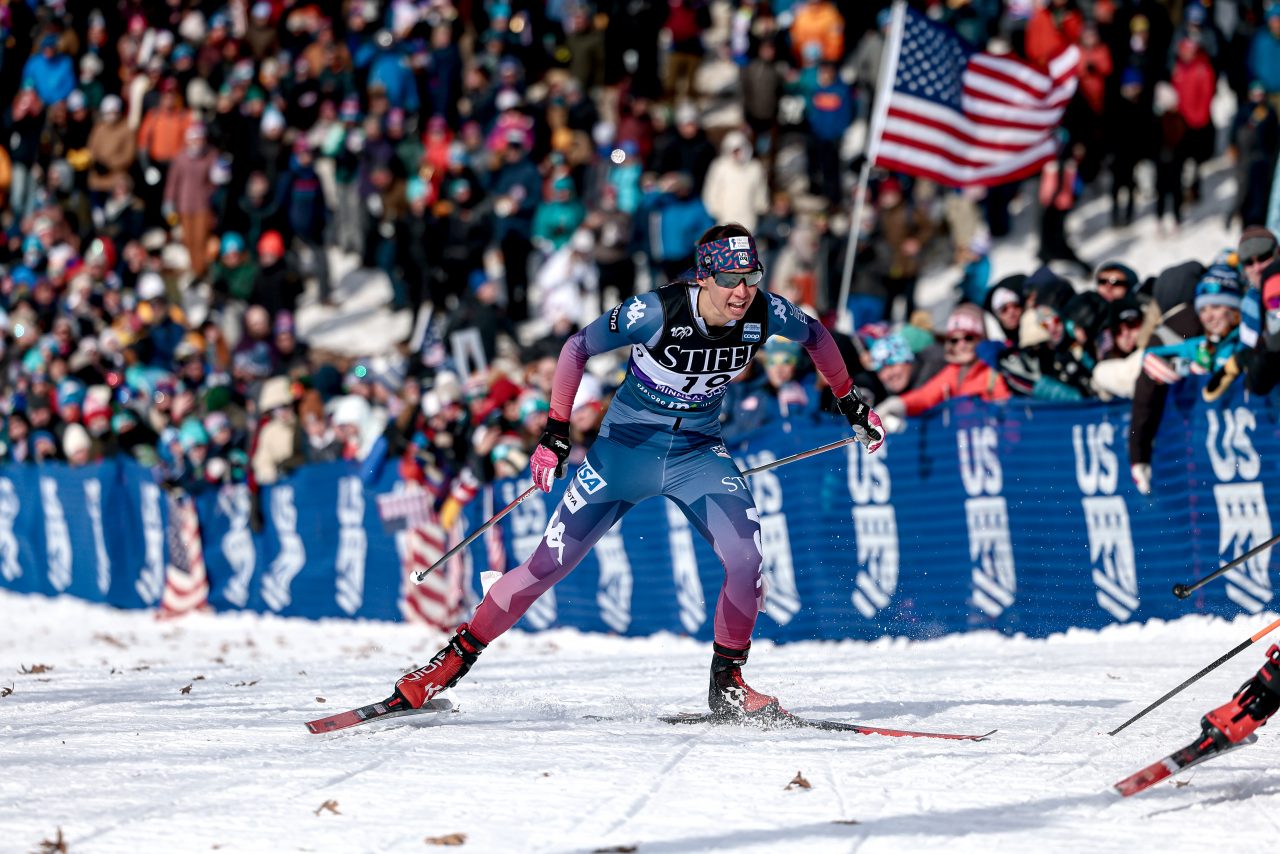
In part I of our interview with Julia Kern we talked about her summer training changes, and what was a very challenging winter of racing. Please continue reading for Part II of our interview.
Race Strategy
Kern has had a lot of success, but she’s still searching for regular World Cup podiums. What will it take to get to the podium more? “What’s really exciting is women’s Sprinting is at an incredibly high level,” says Kern. “There are so many contenders on a given day for a podium. There are lots of ways to go about doing it (improving). There’s more fitness, more end speed— tactical, and a lot of it is how do you approach heats and heat selection and what’s your strategy there. You can play the safe game and go lucky loser and just try to get into the semi-finals and maybe that reduces your chance of a podium at the end of the day. Do you decide to play more of the game and go with earlier heats that are harder to move on, but then you have more energy to move on? That aspect comes down to confidence and what your skill set is. A lot of it comes down to confidence. Being able to be fit enough to then be relaxed in the early heats so you can save energy for later. For me, if I’m more fit at a base level, then I can accelerate on top of that and make the moves when I need to.” Last year’s illness affected this strategic calculation for Kern. “Last year I was missing my pep in my step. My top end just wasn’t there. Normally if I’m rested, that is there, then I can have more strategies in my toolbox.”
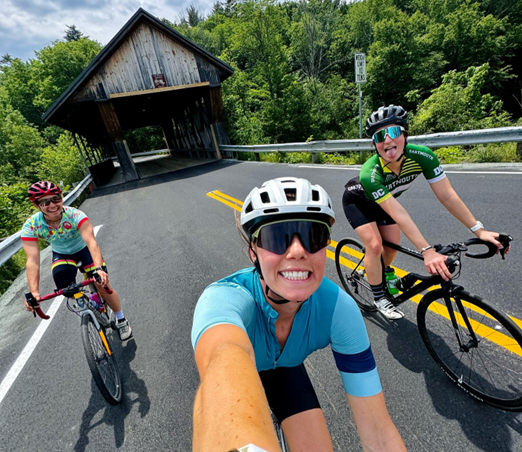
Heat selection is unique to Sprinting and it becomes a significant factor in outcomes. But does going in the first or last heat of a round really make that much difference? “It depends on the course. At altitude it matters a lot more. It also depends on the round. Semi-final two to the finals is a really hard turnaround. Quarter-final five to semi-final two is not so bad. It’s also a little personal. I’ve gone quarter-final one to semi-final two, and that’s too much time. You have to cool down and warm back up. So, you expend more energy. It depends a little on the type of athlete you are.”
And not everything is always within one’s control. “Jonna (Sundling) and Skistad always go in quarter-final one so it kind of takes that out of the cards. If you go there then it’s going to be really hard. So, there’s a little bit of seeing what other people are doing. But coming from semi-finals to finals, it matters for sure, especially if you feel like you’re already skiing at your limit in the semi-finals. The more you’re able to reserve in the early rounds, the better because if you’re burning a lot of your matches in semifinal two it’s really hard to bounce back up for the finals, and that’s where semi-final one definitely helps. But semi-final one tends to be really competitive and really hard to move on from. It’s a gamble. But the more you develop all those tools in your toolbox the more likely you are to move on. That’s why you see the fastest sprinters are consistently making the final no matter what path they take, and consistently on the podium. Ultimately, that’s the goal.”
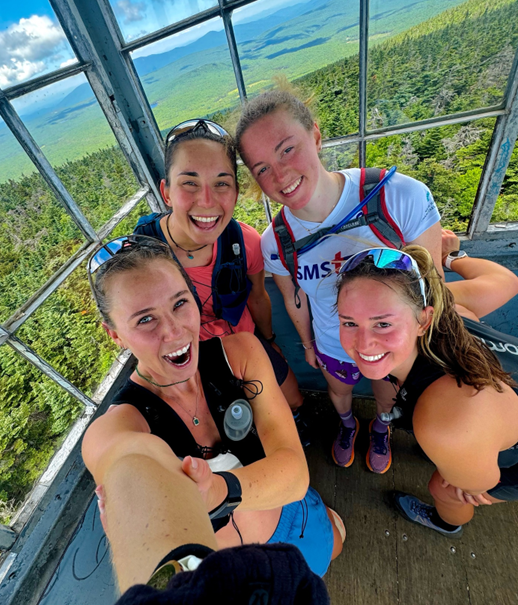
Experience Matters
Kern is now at the point in her career where her experience and tactical knowledge have become a valuable asset. “On World Cup we generally watch footage from previous years during the week leading up to it, and people share their experiences. Then when we go out and do race prep, our coaches are filming too, and in a pack we might try out different positions in a group. Can you slingshot, can you pass? We talk about all of that. The way I approach sprints after that is to have main takeaways. Like this is the only passing opportunity or these are my opportunities to make a move from the back, or ideally at this point on the course I’m in second. But you don’t have full control. The best sprinters are aware and see different options. Then sometimes you get tangled up and your plan goes out the window. There are a lot of different strategies.”
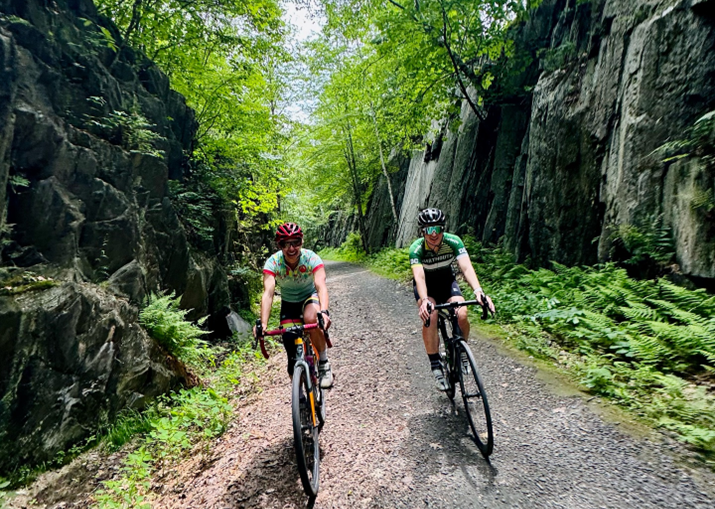
Unintended Consequence of Fluoro Ban
Strategy has also been affected by the fluoro ban. Because of ski inspection, the amount of warmup time before races has changed, and glide wax can’t be adjusted in between heats. “It definitely changed our warmup time. Now we’re out there an hour and forty minutes before the race testing (skis). If the day before the testing is accurate, we’ll do a lot of testing ahead of time. Each athlete has their own method, but we definitely changed our own testing routine. Sometimes my tech will have two similar skis prepared with two different wax jobs. I might have those two different wax jobs on my warmup skis and ultimately decide right before the race which ones to go on because you can check in two different pairs of skis. The other thing to note is you take a freshly groomed course, you test it when the track opens, then you have an hour of people zooming around on the same sprint course and everything completely changes. It can go from bullet proof ice to sugar. So, a lot of times you’re really not testing what’s representative of the race, so our techs are having to predict that. It complicates things a little bit more.” Not being able to have skis freshened between heats also made a difference. “You really noticed it. The extra juices were definitely nice, but it wasn’t something I was thinking about on race day, everyone was in the same boat and that’s just the way it is. Things definitely slow down by the final.”
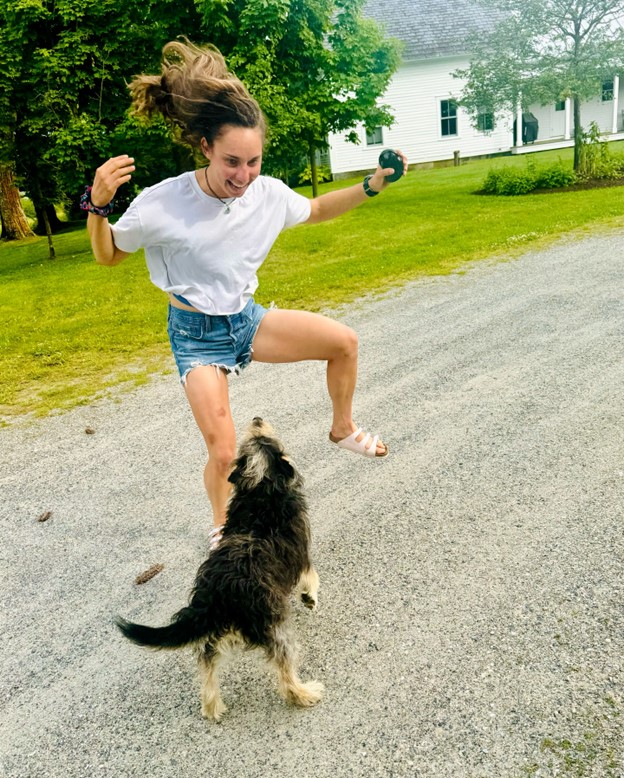
Kern is known mostly as a sprinter, but she does have longer distance chops. “Some of my best distance races have been 30k. I haven’t been consistently good in distance, but I’ve raced entire World Cup seasons the last few years both distance and sprint. I’ve had some strong distance races, but for distance to go well, everything needs to be pretty dialed in, whereas in sprint … even if you’re not in peak form, you can use other aspects to do well. It’s a tough balance. If you put a 50k two days before Drammen (City Sprints), it only makes sense (to do the 50k) if you’re fighting for the Overall. I definitely would love to develop on the distance side.”
Balancing a World Cup Schedule
This is a World Championship year which leads to long term strategic planning. “The sprint obviously is the event I’m targeting. The Team Sprint and the relay are also really big goals. Our team has been searching for that Championship medal in the relay for a really long time. That’s a big team goal of ours. The rest depends upon how the season’s going. The thing our team really has some goals for is the Nation’s Cup. Last year we were in a battle for third (team USA ultimately lost the podium spot to Finland on the last day of competition). We’ve come from tenth to fourth in the world. I feel like that’s a great reflection of a full team effort. That was really fun this winter. It keeps us hungry to get even better together.”
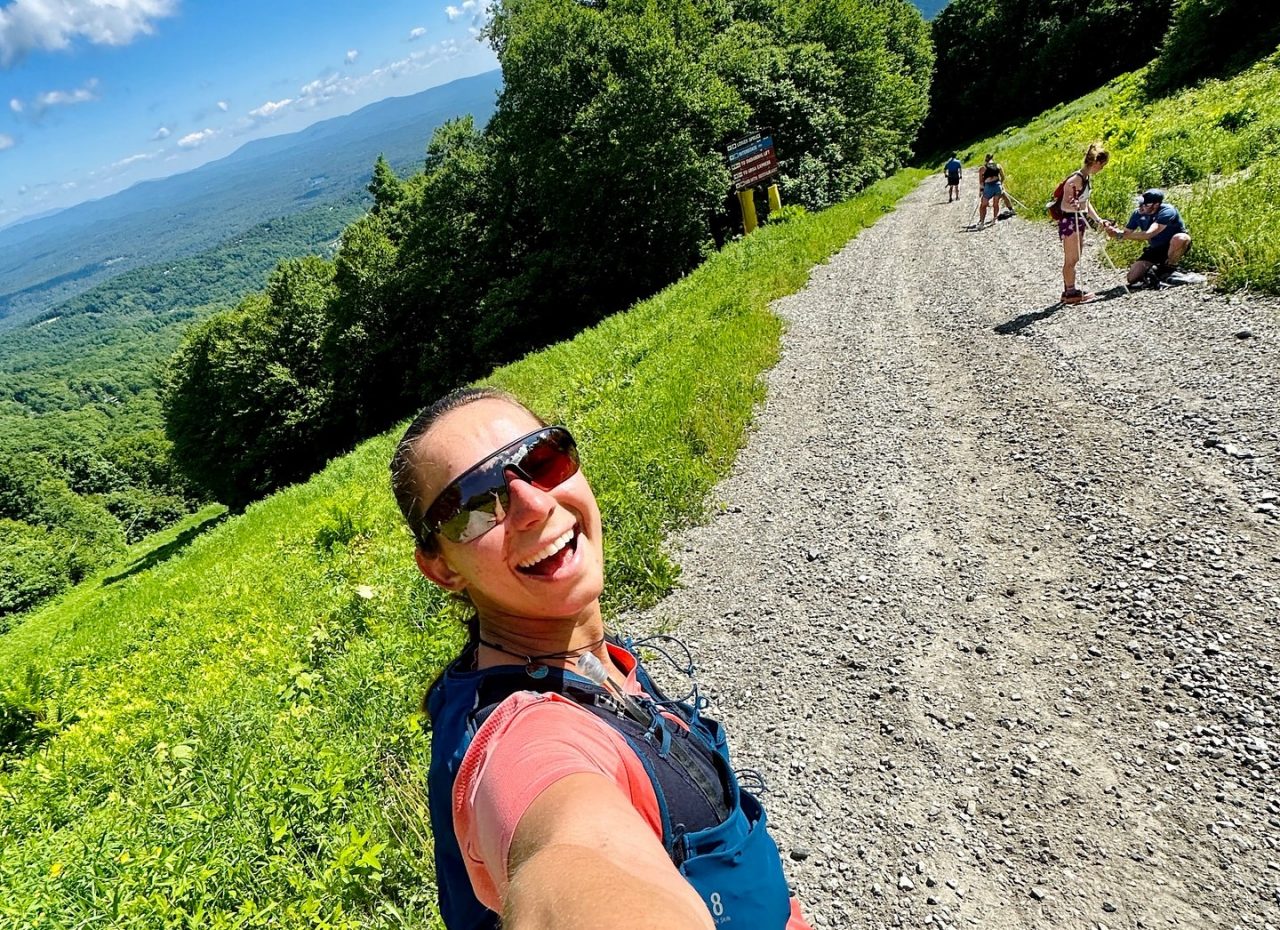
The World Championships demand attention, but there’s also the entire rest of the race season including the Tour de Ski. Some observers and athletes feel like it’s too much. Kern has a unique perspective on this as she is one of the athlete representatives to FIS (International Ski Federation). “I don’t think it’s too much. I think it’s a personal decision ultimately. It depends upon what your goals are and how you respond to racing. For me, I have historically peaked after Tours and a lot of racing. That’s been an important part of my peaking plan. My physiology responds well to a lot of consecutive racing and then rest. For me, I’m stoked that it’s a Championship year. I tend to race my way into shape, but for some people it can tank their season. It’s a really personal thing. It’s also one of the most watched pieces of our sport (the Tour de Ski) … so I think that’s important to continue to grow the sport. As an athlete representative I work closely with the FIS team on the calendar. I think the content will change over the years, but ultimately the athletes always have a choice to race or not to race. We’ve worked really hard on making the calendar better. You’ll now see more of these three day weekends, but then bigger blocks of breaks. There are more breaks built in, and that’s the model the athletes wanted. It is a lot of racing. Racing a full season is really really challenging. But generally, people were happy with the race calendar this last year.”

The tight schedule has also been a point of discussion regarding racing in North America. With Lake Placid anticipated to be a host venue for 2026 it has brought the issue more sharply into focus. “We had an all athlete meeting, discussing this topic and surveyed the athletes. It was over 90 percent who said they wanted to go (to North America). Everyone’s favorite World Cup was Minneapolis, and everyone was so impressed, that they want to go back to the U.S. The challenge is financial for the Europeans who are not used to traveling across the ocean to add a weekend. But it’s important. We saw the impact that Minneapolis had. It’s been really cool being an athlete representative, connecting with the FIS team and the athletes and understanding how the system works, trying to make it as smooth as possible. If something doesn’t make sense (on the schedule), there’s probably a reason why.”
The pressure is on for Lake Placid and Kern sees it as another great chance for North American venues to shine. “It’s not Minneapolis, it’s Lake Placid, and there’s a lot of Olympic history there and incredibly cool new courses. I think there’s going to be a lot of opportunity. People will see that there is excitement in the U.S. (about cross-country skiing), and they are excited to continue to grow the sport here. People are seeing the value of coming to North America.”
Thanks to Julia Kern for taking the time to speak with FasterSkier.
